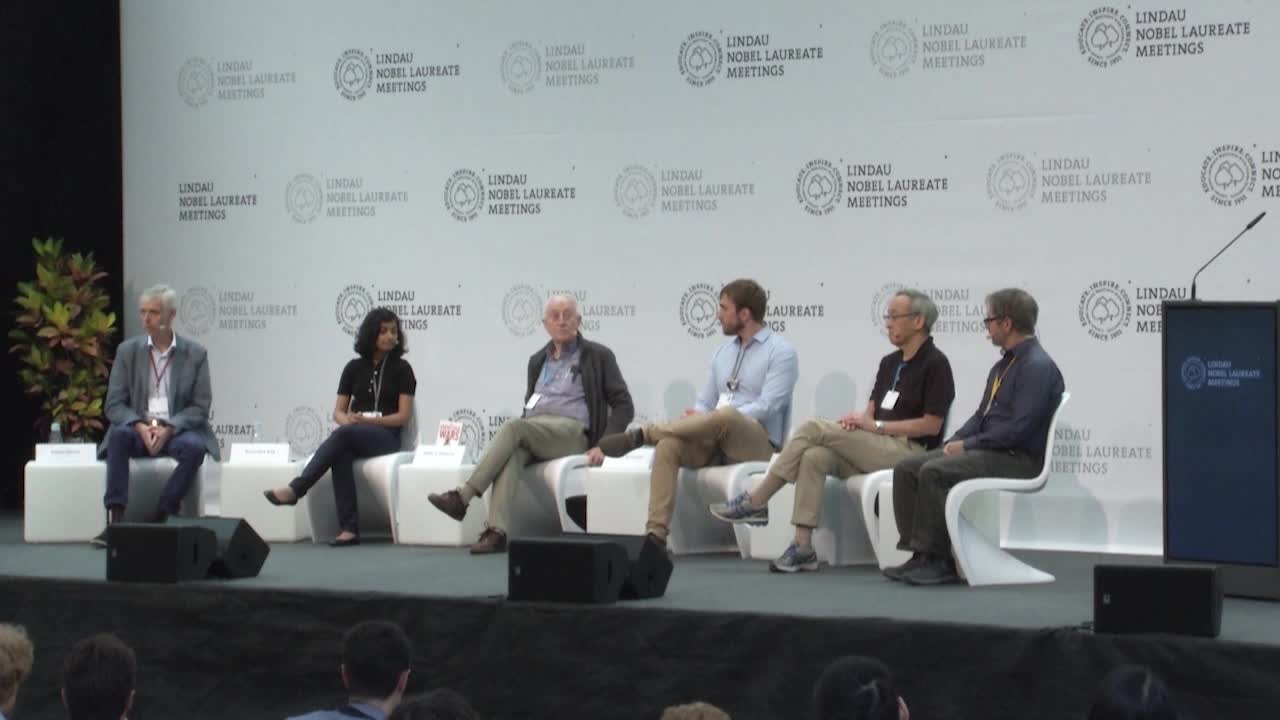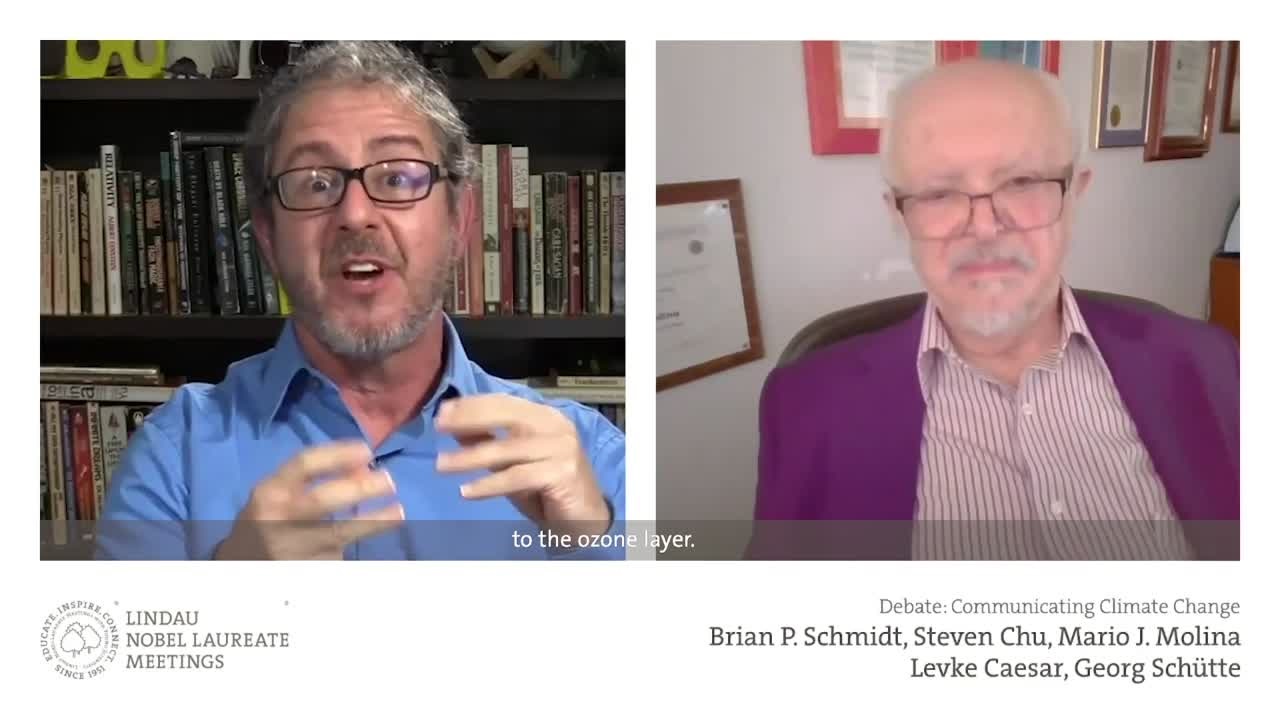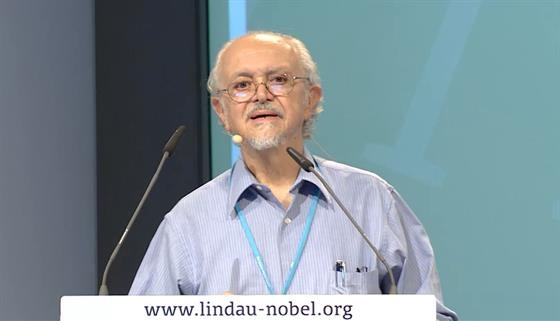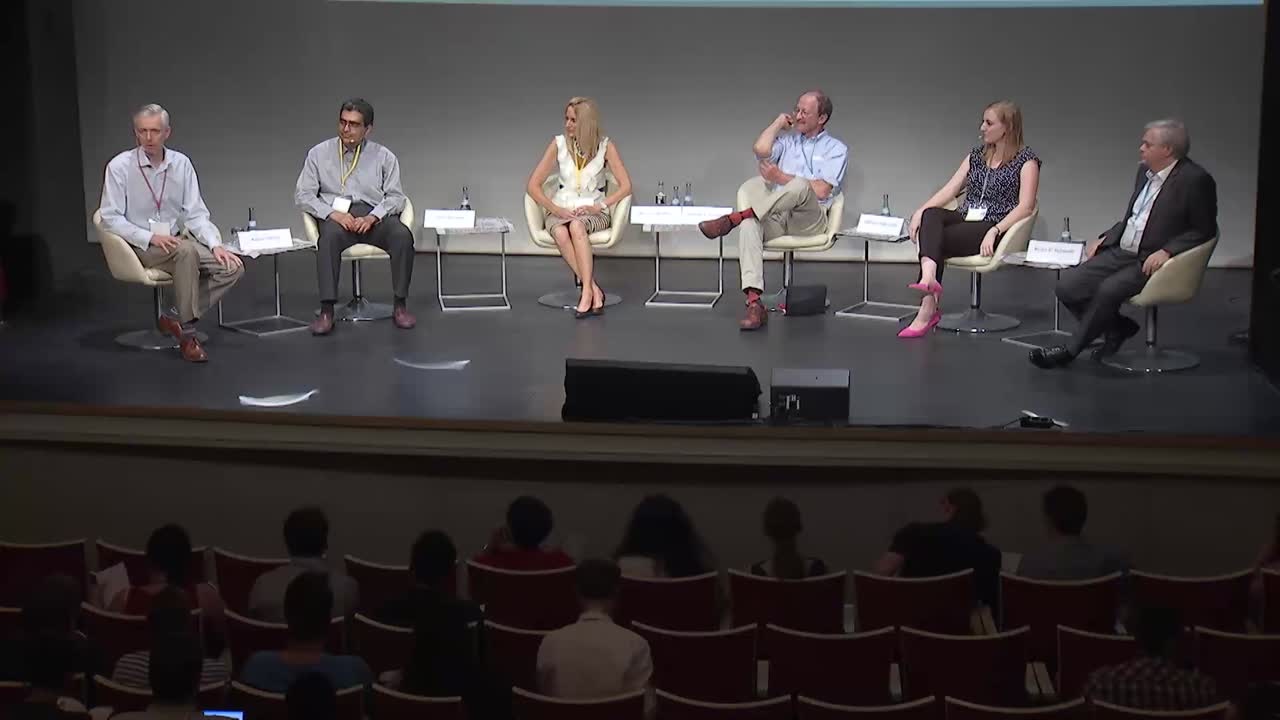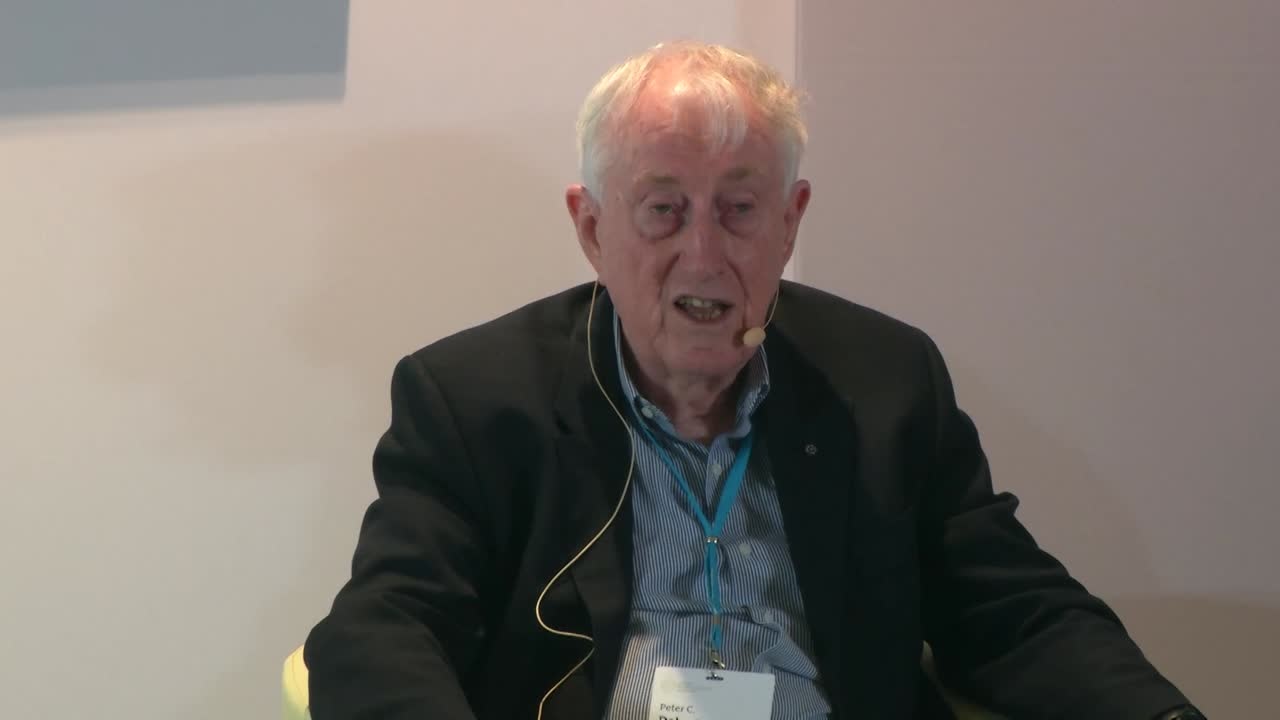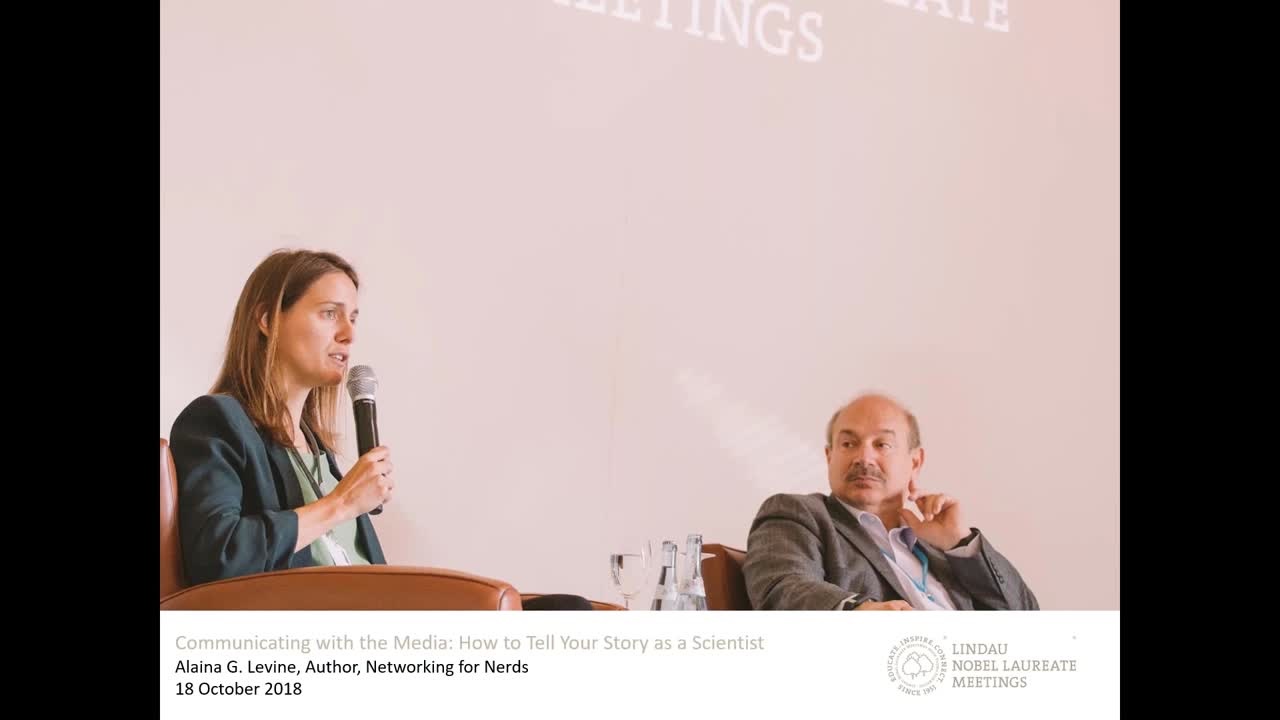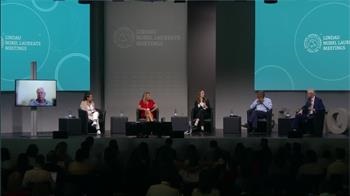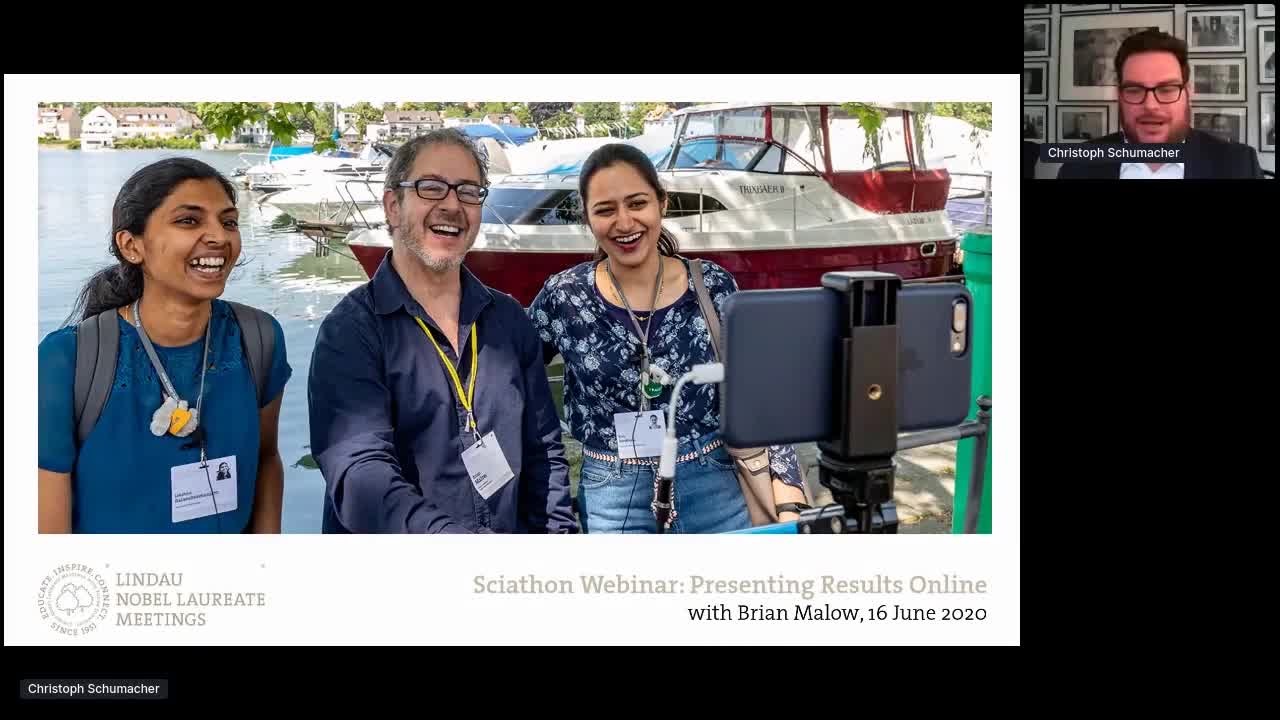Science Communication: Challenges and Opportunities
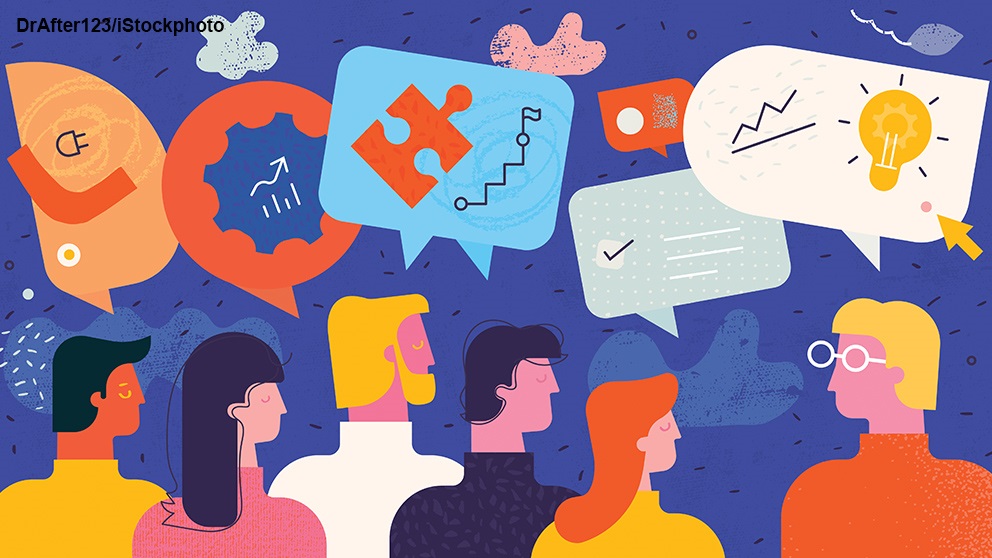
by Neysan Donnelly
The Challenges Currently Facing Science Communication
It was the best of times, it was the worst of times… This opening line of Charles Dickens' A Tale of Two Cities was invoked by Nobel Laureate Brian P. Schmidt in the Panel Discussion on 'Communication Overkill?' in 2015. Seven years later, in 2022, it still seems a pretty good summation of where we find ourselves regarding science communication in general. Why the best of times? COVID-19, the climate crisis, gene editing, to name perhaps the three most salient examples – how successful we are as a species in tackling all these formidable challenges will rest on how well scientists communicate their findings, their recommendations and impress on the public and decision-makers the urgency and importance of action. Thus, there is probably, as never before, a consciousness of the importance of science communication, as distinct from the practice of science itself, in meeting the huge challenges facing mankind.
What about the second part of the quote? Unfortunately, in parallel to the growing appreciation for the importance of science communication and its prominence in society at large, there are serious issues that hamper effective science communication. What are the barriers and challenges? The democratization of information in recent years is of course in many ways an overwhelmingly positive development, as it means that more people than ever before have access to huge amounts of information, mostly online. In the panel discussion on science in a post-factual world from 2018, however, various participants explain why this complete openness and deluge of information is also making it difficult to get the message across:
Panel Discussion (2018) - Science in a Post-Factual World; Steven Chu, Peter C. Doherty, Arunima Roy, Brian Malow, Adam Whisnant; Moderator: Adam Smith
(00:03:27 - 00:04:10)
(00:07:16 - 00:08:00)
Unfortunately, the problems don’t stop there: one overarching trend in recent years that has severely impacted trust in science and science communication is that of post-factual politics, a culture in which entrenched camps have come to regard themselves as the sole possessors of ‘truth’ – whether this truth is grounded in verifiable fact or not. One consequence is that people get caught in so-called ‘echo chambers’, where they only seek out those pieces of information that confirm their pre-held beliefs. In such scenarios, simply providing additional information may not be enough to change minds and may simply cause people to hold on tighter to what they already believe. Further, science communicators also have to contend with deliberate misinformation and the wilful sowing of doubt. Nobel Laureates Mario Molina and Steven Chu know these problems at first hand:
(00:13:16 - 00:16:04)
(00:11:24 - 00:12:40)
(00:17:07 - 00:18:55)
Another challenging aspect to science communication is the way in which science is often portrayed in typical media outlets. One issue is the idea of balance, lack of bias and the importance of paying due attention to alternative viewpoints when presenting a topic. While praiseworthy in itself, these following snippets from Mario Molina’s talk at the 2013 Nobel Laureate Meeting and Harold E. Varmus’ contribution to the 2015 Panel Discussion on Communication Overkill illustrate how this tendency can blunt clear scientific messages and how it may lead to misrepresentation of the scientific consensus around a topic:
(00:28:28 - 00:29:40)
(00:06:50 - 00:07:30)
An inherent property of the way mass media work today is the need to get people to buy papers, or more commonly nowadays, click on an article. Unfortunately, for scientific findings, this can sometimes mean that in an effort to attract more traffic to a story, headlines and stories overreach and make claims that cannot be really substantiated by the actual data. Here is Peter C. Doherty on the nature of this problem and its consequences:
(00:26:16 - 00:28:31)
The other side of that coin, in a sense, is the way scientists typically communicate with one another. As anyone who has attended scientific conferences and gotten to grips with the primary scientific literature will know, researchers talk about science and their findings in a very different way to how these are packaged for the public at large. Levke Caesar, a young scientist who participated in the 2020 Debate on Communicating Climate Change, explains why this is a problem:
(00:06:58 - 00:09:07)
Another major hurdle for many scientists in communicating to the public is simply the question of time – between doing science itself, applying for grants, writing research papers, mentoring and supervising and travel to national and international meetings, most researchers are already incredibly busy. How should they find time to meaningfully engage in science communication on top of all this, especially as such a use of their time is rarely a determining criterion when decisions are made for funding and promotions? In these excerpts from the 2015 panel discussion on Communication Overkill, the panellists define this problem, before suggesting what needs to change and what the benefits of science communication could be for the scientists themselves:
(01:05:32 - 01:06:48)
(01:12:04 - 01:12:21)
Overcoming Challenges and Barriers
1. Effective communication with scientific peers
One aspect that must be addressed when considering how to improve science communication in general, is what can be done to improve the ways in which scientists communicate with their peers. This is an issue to which both Elizabeth H. Blackburn and Martin Chalfie have dedicated a lot of consideration and effort, in the case of Blackburn, notably in the context of the Lindau Guidelines, whose goal is “an open, cooperative science community where data and knowledge are freely shared”. In this Agora Talk at the Lindau Nobel Laureate Meeting in 2018, Blackburn and Chalfie talk about a relatively recent development in the way scientific results are shared, so-called pre-prints, and how such an open way of communicating scientific data can benefit the scientific enterprise as a whole:
(00:14:43 - 00:17:37)
2. Effective communication with the media and the public
When we talk about science communication, we probably mean one of two things: either scientists communicating directly with the public at large, or scientists communicating with the media, who then act as “bridges” between the scientists on one hand and the public on the other. It has been emphasized on more than one occasion in discussions at Lindau, that not all scientists will want to or should feel they have to communicate directly with lay audiences, and that there are important roles to be played by professional science communicators – be they freelancers, press officers, or journalists – in communicating science.
In this webinar from 2018, Alaina G. Levine, who was herself a scientist before going on to work as a press officer and as a science journalist, draws on her experience to give scientists some pointers about how specifically researchers can engage and build relationships with journalists in order to attract media attention to one’s field of research:
(00:53:05 - 00:55:40)
Of course, as well as communication mediated through media channels, scientists can and do communicate directly with the public at large. How can scientists ensure that such communication is effective and beneficial for all parties? This was a question considered by the panel discussion entitled ‘Why Communicate’ at the 2013 Lindau Nobel Laureate Meeting. In this snippet from that discussion, Beatrice Lugger, Deputy Director of the German National Institute for Science Communication, shares her thoughts on what scientists should know when communicating with the public and with the media:
(01:00:00 - 01:02:26)
(00:17:45 - 00:18:12)
3. Effective communication with politicians and decision makers
Particularly during the COVID-19 pandemic, the role of scientists in providing advice to politicians came under scrutiny. As moderator Adam Smith pointed out in the Trust in Science, Trust in Chemistry panel discussion from the 2022 Lindau Nobel Laureate Meeting in Chemistry, governments the world over claimed to be “led by the science” on all decisions related to how they managed the pandemic. How then were the policies they enacted often so different? Were they being advised differently, or did they choose to interpret the same facts in diverse ways? Nobel Laureate Venki Ramakrishnan, who shared the Prize in Chemistry in 2009, has extensive experience in advising governments. In this excerpt, he explains why it’s problematic to claim to follow “THE” science and how scientists can best advise elected officials and leaders bearing in mind that truth is often provisional rather than absolute:
(00:08:45 - 00:10:44)
Opening a Dialogue
If these are some of the attitudes and aims that scientists should strive to espouse when communicating with the public, the question remains of how to get people to listen? In a sense, all of science communication, and particularly in today’s polarized world, boils down to how to open a dialogue with people who perhaps have very different backgrounds and viewpoints than yours. This is a thorny problem to which Nobel Laureates Steven Chu and Brian Schmidt have devoted a lot of time and consideration. In these following excerpts from a debate on ‘Communicating Climate Change’ from the 2020 Online Science Days, Chu, drawing on his experience as US Secretary of Energy, and Schmidt, expound on how to best open lines of communication with people who may, at first, not be very receptive to ideas such as climate change but also other important issues such as policing reform:
(00:19:46 - 00:22:24)
(00:24:06 - 00:25:35)
(00:28:00 - 00:29:50)
Even beyond communicating with people who may have very different backgrounds and viewpoints than our own, to be really effective and worthwhile, science communication must also involve communication with those who, at least, to begin with, are sceptical or even hostile to scientists and the messages that they want to communicate. How can scientists rise to this challenge?
(00:32:27 - 00:34:54)
As emphasized by Chu and Schmidt, stories can be highly effective in communicating science and making it ‘stick’. Another way of considering the challenge of opening a dialogue is to think about how to package a message so that it becomes understandable and relatable to lay audiences. As Brian Malow, science communicator and science comedian, puts it, ‘If your audience only speaks French, then you have to speak to them in French’. In his webinar on the Sciathon, which was organized as part of the 2020 Lindau Science Days, Malow shares his favourite science communication advice, which he heard from Richard Feynman, recipient of the 1965 Nobel Prize in Physics, and also develops this idea further in a further snippet from this same webinar:
(00:53:14 - 00:56:06)
(00:58:46 - 01:00:36)
Strengthening Trust in Science – Education and Diversity
As suggested by its title, increasing trust in science was one of the key discussion points from the panel discussion Trust in Science, Trust in Chemistry from the 71st Lindau Nobel Laureate Meeting in Chemistry in 2022. Two aspects that were particularly highlighted by the participants include the key role that education – from a young age – plays in inculcating the principles of scientific investigation in students and the critical role of diversity. As this excerpt makes clear, the latter is not only important to increase trust in science among the general public, but also to ensure that scientific endeavours are effective.
Diversity is important to make sure that people trust science, but also to make sure that we are tackling problems using all of the talent that mankind has at its disposal:
(00:42:05 - 00:45:03)
The Special Role of Nobel Laureates in Science Communication
Of course, as Lindau is the setting for all of these discussions related to the communication of science, it is only natural that, on occasion, talk will turn to the specific role of Nobel Laureates in this undertaking. One point that has been emphasized on more than one occasion is how the award of the Nobel Prize establishes a platform for the Laureates to share their thoughts, advice, and opinions on a whole range of issues. The most prominent examples of Nobel Laureates using their platform at Lindau to communicate on scientific matters are surely the Mainau Declarations, two appeals directed by groupings of Laureates to decision makers and the world at large. The first, in 1955, was an appeal against the use of nuclear weapons, while the second, in 2015, was an urgent warning regarding the need to act quickly to limit greenhouse gas emissions and thus climate change. In the following excerpts, Laureates discuss the power – as well as the limits – of such appeals:
(00:04:43 - 00:05:19)
(00:34:19 - 00:35:15)
The critical role of science communication has undoubtedly gained a far greater appreciation in recent times. However, it is likely that finding better, more compelling ways to communicate scientific findings and the importance of science in general will assume even greater importance in the years to come. To cite but one example, ongoing debates about climate change and efforts to combat it, will ultimately only be effective if all parts of the population are taken along. This, in turn, will require scientists and science communicators to further refine the way they communicate and to reach more and more people in a way that is not hectoring or patronising but that at the same time serves to convince society of the urgency to act.
Clearly, the challenge is a daunting one. One heartening trend is, however, the commitment and engagement of the younger generation – be they scientists or non-scientists. This commitment is finding outlet in diverse ways, whether in the framework of movements such as ‘Fridays for Future’ or in other, less formal avenues. This commitment is also evident in the Young Scientists that visit Lindau year after year. Far from constituting an afterthought to their day job, these early-career researchers view science communication, advocacy and education as integral to their role as scientists. Assuredly, these Young Scientists will through these efforts play a major role in ensuring that mankind meets the enormous challenges ahead.

